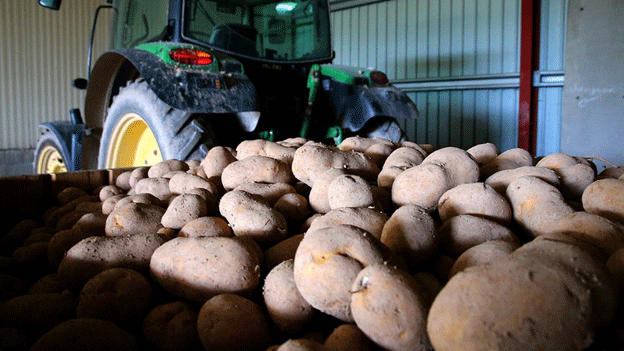For farmers, chefs, and home cooks alike, potatoes are a staple that can transform into countless dishes—from mashed potatoes and fries to salads and soups. However, potatoes have a limited shelf life if not stored correctly, as sprouting renders them unsafe to consume. Here are six essential tips to help you store your potatoes in an optimal environment, allowing them to stay fresh and sprout-free for up to six months.
1. Store in the Dark
Light exposure is one of the primary culprits for sprouting and greening in potatoes. When exposed to light, potatoes begin to produce chlorophyll, which gives them a green tint and an off-taste. Worse, this greening process can signal the presence of solanine, a compound that can cause illness if consumed in large quantities. Storing potatoes in a cool, dark place like a pantry, cellar, or other shaded area can help maintain their quality and safety.
2. Keep the Temperature Between 45–50°F (7–10°C)
Temperature control is essential for long-term potato storage. According to Jamey Higham, President of the Idaho Potato Commission, temperatures between 45–50°F are ideal. If stored too cold (below 42°F), the starches in potatoes convert to sugars, affecting both taste and cooking results. On the other hand, temperatures over 55°F will speed up dehydration, leading to shrinkage and, eventually, sprouting. Farmers and storers should carefully monitor storage areas to keep temperatures within this range to ensure the longest shelf life.
3. Ensure Proper Ventilation
Potatoes need ventilation to prevent moisture buildup, which can encourage mold and rot. Open containers, such as paper bags, baskets, and burlap sacks, allow for air circulation, which keeps the potatoes dry and fresh. Blogger Jerry James Stone recommends storing potatoes in an open paper bag to extend freshness for up to six months. Ensuring proper airflow can be a small but effective step for commercial and home storage alike.
4. Store Potatoes Away from Onions
Potatoes and onions may seem like perfect pantry partners, but they should actually be stored separately. Onions release ethylene gas, a natural plant hormone that accelerates ripening in nearby produce. When potatoes are exposed to ethylene, it encourages sprouting, shortening their shelf life. Storing them separately reduces this exposure, helping potatoes maintain their quality longer.
5. Avoid Refrigeration
It might be tempting to store potatoes in the refrigerator to keep them cool, but refrigeration isn’t ideal for raw, uncut potatoes. Low temperatures can cause “cold-induced sweetening,” where starches convert to sugars. This process not only affects flavor but also causes darkening during cooking and increases acrylamide formation, a potential carcinogen according to the U.S. Food and Drug Administration (FDA). Keeping potatoes out of the fridge ensures they stay both safe and flavorful.
6. Special Care for Cut Potatoes
If you have already peeled or cut your potatoes, they are an exception to the “no refrigeration” rule. Peeled or cut potatoes can oxidize and turn brown when exposed to air. To preserve them, place cut potatoes in a bowl of cold water to cover them entirely and store them in the refrigerator. Use these within 24 hours for best quality. This method helps prevent browning while extending freshness in the short term.
By following these simple storage tips, you can keep potatoes fresh, flavorful, and sprout-free for up to six months. Whether you’re storing potatoes on a large farm or in a small home pantry, controlling light, temperature, and ventilation can make all the difference in maximizing shelf life and minimizing waste. Proper storage benefits not only the consumer but also supports sustainable food practices by reducing spoilage.

